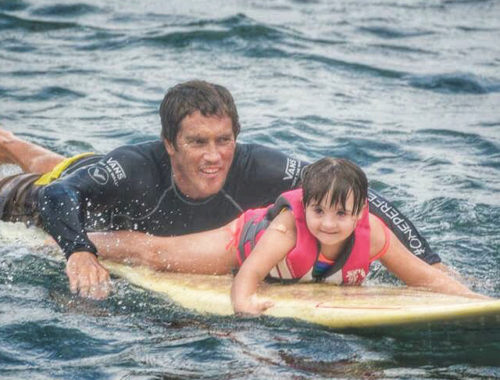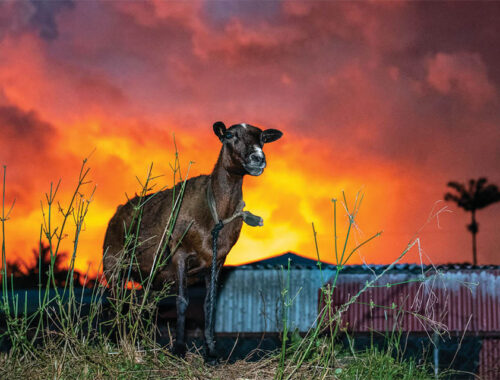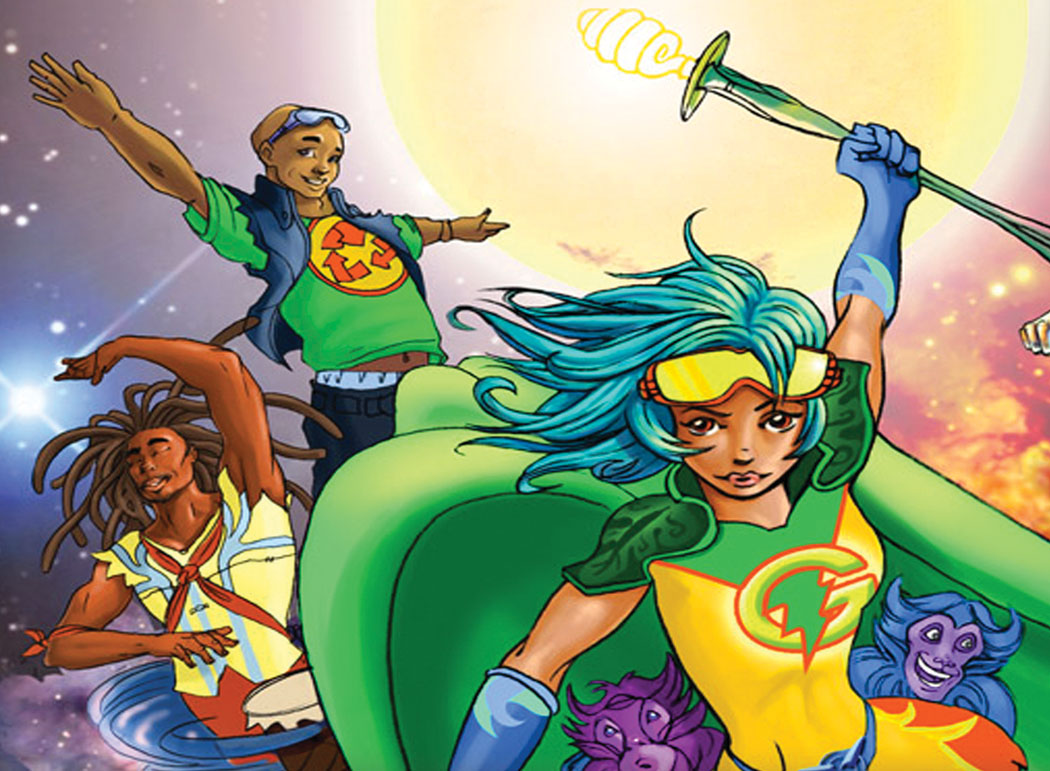
The Journey of Hula Competition: The Experience of One Haumana

By Gayle ‘Kaleilehua’ Greco
When you are asked to be in a hula festival, contest, or competition, the journey for oneself starts at that moment. Inevitably, it is really not about the contest at all; it is about the passage that you travel as a dancer; the dedication, commitment, and the stretch and confidence that your kumu instills in you. The kūpuna class of Hālau Hula Na Pua U‘i o Hawai‘i participated in last year’s Thirtieth Kūpuna Hula Festival in Kailua-Kona, and when it was all pau, I wrote this letter to my close friends who had supported my move here, my new hālau, and my hula.
Aloha Kakou,
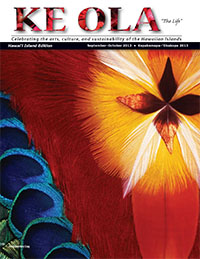
Looking around my house, I have garment bags of costumes and dresses, bobby pins and hairnets and flowers for my hair, hula suitcases with everything from measuring tape to wire cutters, five kinds of makeup, and different changes of clothing. I could have a garage sale with just what I brought to and from the hotel each day!
Here we were at the Sheraton Keauhou Convention Center for the day of our soloist’s performance. For those who have been to hula contests before, you know the soloist day is a day of much preparation and one of keeping her centered and quiet. It is a special kuleana to give kōkua to the kumu and his dancer on the day of competition. Early in the morning, we settle into our hotel room, while in the lobby the craft vendors are setting up, musicians are arriving for sound checks, and dancers start lining up for their one allowed rehearsal on stage.
Kumu Etua Lopes had choreographed a beautiful hula to the mele Nani Hulihe‘e, written by Aunty Lei Collins, in which he was honoring the Ali‘i of the Palace where our hālau resides and practices. Julie Viloria, a Kailua-Kona native who has been dancing with Kumu Etua for about 10 years, had lost her husband in 2011 and took a break from hula since that time; she had just returned to the hālau classes late last year. It was wonderful to have Julie chosen as the soloist as she was doing this for her late husband, who had faithfully come to every practice just to watch her dance. Kumu Etua had designed a ‘period’ piece, so Julie was dressed in white lace with a pale blue background, full long sleeves, and a puffy lace petticoat that made her look like a princess.

During the day, Julie remained quiet as she had different hairstyles and makeup put on. Kumu Etua began teaching three of us how to make lei out of lehua flowers, which he had picked earlier in the week, looking for the fullest of the yellow, orange, and red lehua blossoms. This was not a common lei of stringing flowers together. What ended up taking three of us five hours to make was simply magic. Kumu Etua had us cut each lehua blossom at the spine of each spike and when that was all done, we began threading each one onto either a string or wire as he instructed. One color at a time, until we had three strands of each color. Through this time we were silent as we wove our mana‘o into Julie’s lei, and other times Kumu would talk story and tell us about how he learned this technique, or a funny story about life, or how and why he chose this type of lei for the competition.
We had a room overlooking the ocean and every now and then Kumu would go out on the lanai, gaze out to the horizon and then come back in and add another amazing technique to what we were doing.
In what seemed to be an instant, and yet it was hours later, Kumu Etua picked up the final strands of our weaving and asked us to hold one end while he began to twist and turn these lei with palapalai that he had woven separately. I stood there in awe watching what was being created in front of me, as if with a magic wand, he produced out of lehua blossoms, what appeared to be a feather lei. He asked Julie to come over for a fitting of the lei po‘o, and when she saw his creation, she began to cry.
As he adorned her with the lei, it was as if the two of them were transported to another time and place, an honoring of the Ali‘i—and yet here it was, a tender and private moment between a Kumu and his soloist.
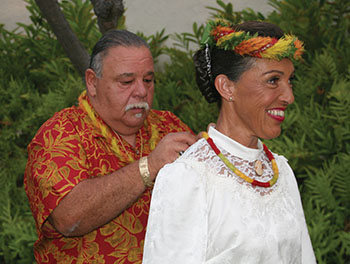
Another hula sister arrived and began to iron Julie’s costume, while another kumu finished her hair and makeup, and we made her a meal. All the while, there were moments of laughter, stories, last minute instructions, and quiet too. In the last hour before her performance, we left the room so that Julie could have her time with Kumu.
Julie walked on stage like an angel with a smile so bright, and from her first move, she owned the dance. She was in her zone, and all that followed was simply a channeling of her hula self. While the other soloists were lovely in their own right, we all knew that Julie had done something special on stage.
After waiting through the second day of performances to get to the awards ceremony, it was all confirmed when Julie won first place in the women’s division. She and Kumu Etua were humbly overjoyed, and we, as the hālau, gave them a standing ovation to their accomplishment, as did many others in the audience. Our first 15-hour day was over with, and it was back home to reorganize and get ready for the group dance and competition on Thursday night.
Day Two
We arrived at the hotel at 8 am, and as I walked through the vendors’ area, I realized, “Wait a minute, I haven’t even had a chance to shop!” Since I was a few minutes early, I ran into the craft area, and who do I bump into but our Kumu Etua. So funny, a few other hula sisters were milling around the vendors too. My thoughts of shopping were short lived, as I now was on ‘Kumu time,’ so up to the hotel room I went again.
One by one the dancers started arriving hauling in their costumes, clothes, ironing boards, food, and everything but the kitchen sink. Actually, I wish we had brought an extra sink as we could have used it throughout the day and evening!
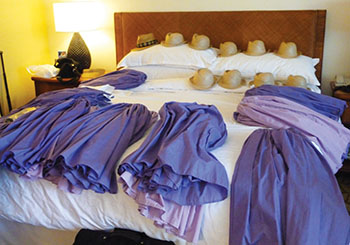
Kumu Etua had designed our costumes with material he brought from Tahiti years ago, a very bright traditional print. In his vision, he saw us each in a different color dress representing the happiness of the mele we were dancing in honor of his Kumu, Uncle George Na‘ope. This was the thirtieth year of the Kūpuna Hula Festival and the event was dedicated to Uncle George, well known for starting this festival along with many other hula celebrations in the islands. Kumu Etua had chosen Ku‘u Papale and incorporated I Kona into the mele to honor his kumu, who was known among many other things, for his hats and love of Kona.
For our adornments, Kumu Etua decided on using the fruit from the hala tree, where the lau is taken to weave the traditional lauhala hats. Kumu had made head and neck lei of the hard fruit by cutting it into designs of bright orange, yellow, and green, once again weaving them with palapalai and even making a hatpin out of the hala and kukui nuts. Eleven Auntys had woven the hats for each of us, which was such a special gift of their ancestral art. Kumu Etua began placing the hala lei onto the hats and fitting them on the ten of us, one by one. Then came the neck lei with equal attention.
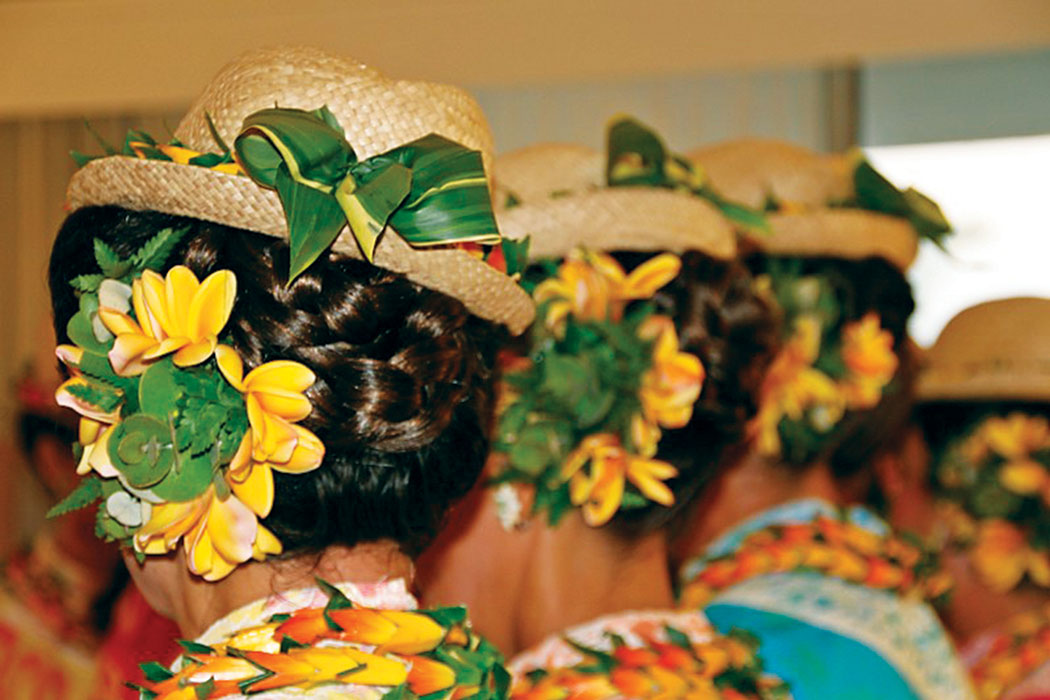
As this was going on, we were each sent to have our hair done. No one would think that by wearing a hat, there would be much to do with your hair. Oh my, we each sat in the chair as our hair was put into braids, extensions, stuffing, teasing, spraying, pinning, all that was needed so that all ten of us looked exactly the same no matter how long, short, thick, or thin our hair was. We had beautiful braided cocos (buns) that fit right under the back of our hats, and perfectly coiffed hair that softly supported the sides. Each of us emerged from the hotel room wrapped in a scarf, looking and feeling like we were coming out of a temple. Up in the elevator, we went to get checked out by Kumu Etua for any last minute touchups.
Back up to the room where our dresses were freshly ironed, the hat blocker came in to do the final blocking. Our makeup was applied, and Kumu Etua began the process of placing the plumeria, liko, and palapalai in our hair. Painstakingly precise, he modeled each of us after the other one until each hat and cluster of flowers looked identical side-by-side. And now the dresses and the lei were put on and double and triple checked. In a moment’s time, we were transformed into Kumu’s vision to honor Uncle George, all in brightly colored dresses, hats, and flowers. Now, it was time to pule.
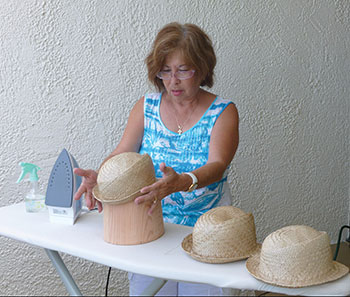
Hand holding hand, Kumu led us through a beautiful prayer to Ke Akua and we tried to hold back the tears so we didn’t ruin our makeup. Time for silence and waiting. We knew our dance, now it was time to perform.
In silence, Kumu led us through the halls and elevator, many times being stopped by other hālau and guests who were stunned at our beautiful appearance and wanted to take pictures. We arrived at the convention center back stage door in the waiting area, and again were noticed by many. All the while, trying to stay in our centered space, respecting the pule that had been given to us.
Soon, the wait was over and our call to the stage came.
The rest is a blur. We were introduced and as we each walked up the stairs to the stage in our different colors; the cheers and applause heightened; out we came: red, yellow, blue, green, orange; the colors kept coming as pua blossoming on a tree. Our musicians started to play, and the fun began. In our flowing missionary style dresses, we floated, smiled, teased at the sassy parts, and revered at the solemn chorus, and within what seemed to be a minute, we were pau, time to ho‘i off stage. The audience was so kind and the cheers and accolades were many. We knew we had done the best we could. We were greeted by our Kumu and we knew he was pleased.
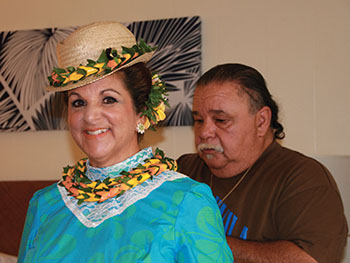
We quickly changed out of our costumes into our white dresses, still keeping on our lei and hats, and then scurried down to the convention center again to watch the rest of the hālau perform. Such creativity and dedication went in to each of the dances. Twenty-two hālau from O‘ahu, Kaua‘i, Maui, Moloka‘i, Hawai‘i Island, as well as Japan and California were represented, so the competition did not lack for talent.
The awards ceremony began, and we had just seen Julie Viloria receive her first place award, so now it was time for the group awards. We were so excited to receive second place with a very close point score to first place. It was such an honor and a joy to acknowledge Kumu Etua for his vision, dedication, and teaching each of us to be better at our hula than we were before we started this journey. And he, in turn, had that twinkle in his eye and knew what we had accomplished.
We ran back up to the hotel room to celebrate the months of practices that brought us to this point. The hotel room looked like a rummage sale with clothes, undergarments, flowers, ice chests, awards, paper towels, scissors, material, ‘ukuleles, champagne, musubi, cheese, cookies, and snacks of all kinds. Our only care at that moment was to raise our glasses, laughter, and heartfelt cheer to this long 17-hour day. Then, of course, it came time to leave, and like most hālau do, within moments, the hotel room was cleaned up and looked like it was ready for check-in.
For us, the 2012 competition participants, the journey has ended. For our Kumu, he is, today, on to the next production—a concert at the Palace, followed by the keiki competition next month and Merrie Monarch in 2013—as well as preparing all the classes and coordination that lead up to these events.
A Kumu Hula’s life is one that runs on an endless energy stream. I see this in Kumu Etua as I did with Kumu Pilialoha in California. I am feeling very blessed learning and growing with all that they share; hoping that, as haumana, we can replenish our kumu with love and light.
Mahalo for your continued love and support of my hula journey and life here in Hawai‘i Nei. ❖
Me Ke Aloha,
Kaleilehua–o-Panaewa
Contact writer Gayle ‘Kaleilehua’ Greco: gaylegreco@hotmail.com
